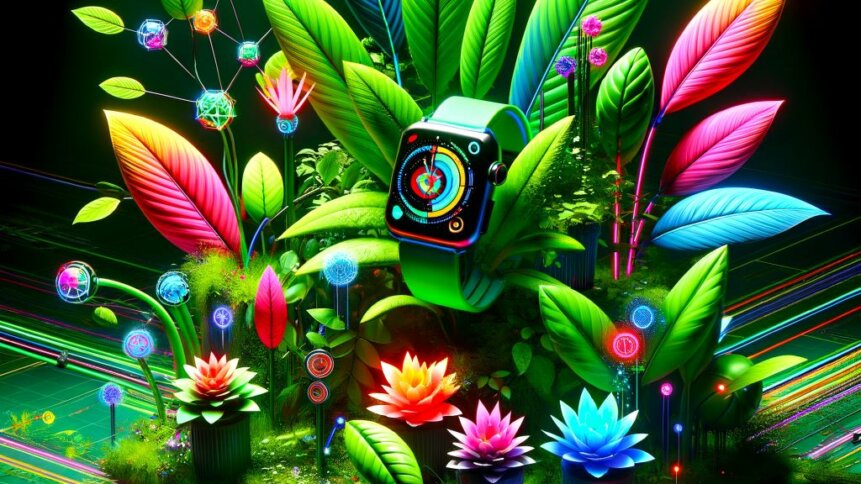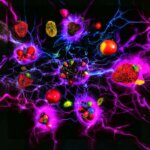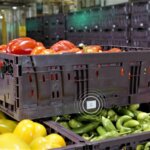Plant wearables – a growing technology trend

|
Getting your Trinity Audio player ready...
|
Wearables such as the Apple Watch can nudge their wearers towards healthier lifestyles – telling them when to stand up and displaying progress towards exercise goals. At the same time, multifunctional wearable sensors are paving the way for personalized healthcare. But it’s not just humans that can benefit from these advances. Plant wearables could help growers to better look after their plants by leveraging the benefits of smart sensors and mobile apps.
The World Economic Forum (WEF), which has a good track record in highlighting innovations destined for big things, placed wearable plant sensors on its top 10 list of emerging technologies in June last year. Satellites and drones have long provided eyes in the sky to enable precision agriculture, but plant wearables can gather even more targeted data.
“Wearable plant sensors promise to improve plant health and increase agricultural productivity,” write the authors of the WEF report. “Data from plant sensors can optimize yields, reduce water, fertilizer and pesticide use, and detect early signs of disease.”
The goal is to ramp up food production to keep pace with population growth; making the best of available resources. And at the cutting edge of plant wearables are flexible sensors patterned with microneedle arrays, which can extract various chemical signals from leaves. For example, volatile organic compounds are emitted by plant leaves in response to stress and disease and can forewarn of trouble ahead.
However, the technology doesn’t have to be this complex to make a meaningful impact. Various developers are showing how simpler designs of plant wearables, with fewer sensing inputs, can still provide major insights to growers. What’s more, these affordable plant sensing kits, which connect to smartphones and feature companion apps, help to spread hi-tech growing knowledge more widely – beyond the confines of agribusiness users.
“It’s science applied to small-scale gardeners, whether that be for house plants or produce people,” explains Ashley Esakin – a soil scientist based in Canada who’s been working with EarthOne on a connected plant monitor.
What data do plant wearables provide?
Plant monitors such as the EarthOne measure environmental conditions such as ambient temperature, relative humidity, and light intensity, as well as collecting soil moisture and pH readings. And while that may not sound revolutionary at first, those inputs go a long way in determining what plants need and whether they’ve been placed in their optimum location.
Plant wearables and mobile apps are a powerful combination. For example, using a smartphone camera, the software can identify the plant and retrieve fine-tuned growing recommendations. From the main dashboard, users can quickly determine the basics of whether their plants need watering and are receiving sufficient light.
Things become more interesting still when those raw inputs are turned into plant growth metrics such as cumulative growing degree days (GGDs) and vapor pressure deficit (VPD). Cumulative GDD data can be thought of as a running sum of available energy for plants to develop.
“You can picture the relationship between how fast a plant develops and average temperature as a straight line, at least until you get to the very high temperatures,” wrote Betty Klepper – a pioneer in plant physiology and former Research Leader at the United States Department of Agriculture. “The warmer it is, the faster the plant will develop.”
Taking the example of cereal plants, which – on average – produce a leaf for every 100 GDDs, Klepper explained that farmers would be expecting to see a third leaf on their crop developing after the number of GDDs had passed 275 – assuming that all’s well.
VPD, which is calculated based on temperature and humidity, influences plant behavior on multiple levels. Specifically, it affects the amount of stomata opening that occurs on a plant’s leaves, transpiration, carbon dioxide uptake, nutrient intake at the roots, and plant stress.
“VPD is a very powerful tool in the grower’s toolbox,” comments Pulse Grow – another developer of plant monitoring hardware and software. “To get the best results you need to find the correct VPD sweet spot for the plant’s stage of growth.”
Plants cannot speak up to ask for water when they are thirsty. Now, scientists have developed plant wearables to measure water loss. Read details in #CropBiotechUpdate: https://t.co/rd3LwTMUOT pic.twitter.com/ev8fXBha8H
— ISAAA Inc. (@isaaa_org) May 16, 2022
Things start to click once you picture VPD in terms of the capacity of the surrounding environment to absorb plant moisture. Plants ‘pump’ – or more correctly, transpire – water into the air to regulate their temperature, remove waste, and enable nutrient transport, to list just a few critical processes at work.
If VPD is either too high or too low, grower risk either working their plants to hard or constraining development. Pulse Grow reports that ideal VPD conditions can boost yields by 20%.
It might be a stretch to draw such a comparison between plant wearables and smartwatches, but both devices help to keep targets ‘in the zone’. For example, a smartwatch will help the wearer to exercise more efficiently – within a given heart rate band – and, thanks to growth metrics such as VPD, plant health can be optimized too.
If we could listen to plants, what would they say?
Despite all of the progress in plant wearables, there’s much more scope for listening in to try and decipher the needs of plants. For a glimpse of the future, it’s worth brushing up on developments in fungal computing, which exploits spiking electrical signals – analogous to patterns of neurons firing in the brain – passed by mushrooms through their roots.
Some researchers in the field of fungal computing, writing in the recently published book Fungal Machines, argue that the complexity of fungi’s spiking communications rivals, or even exceeds, that of European spoken languages. The thinking here is that such complexity would be required for fungal root structures – mycelium filaments – to satisfy what’s believed to be their key role as a communication network linking plants, insects, and animals.
Whatever the reality of fungal communications, there’s a growing belief that IoT-enabled food and plant sensors are strong prospects for empowering sustainability. “As technology progresses and costs decrease, the widespread adoption of these sensors is poised to revolutionize the agriculture and food industries, fostering more efficient, resilient, and sustainable food systems,” conclude researchers reporting on this theme in the journal Advanced Intelligent Systems towards the end of 2023.









